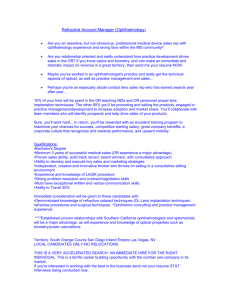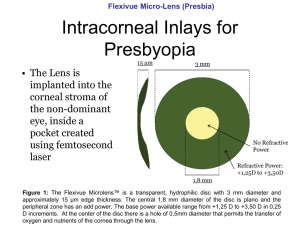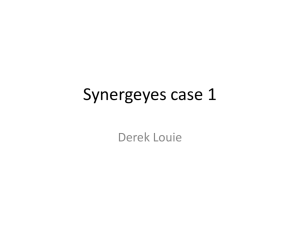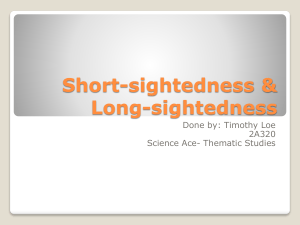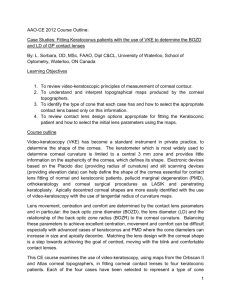outline29399
advertisement
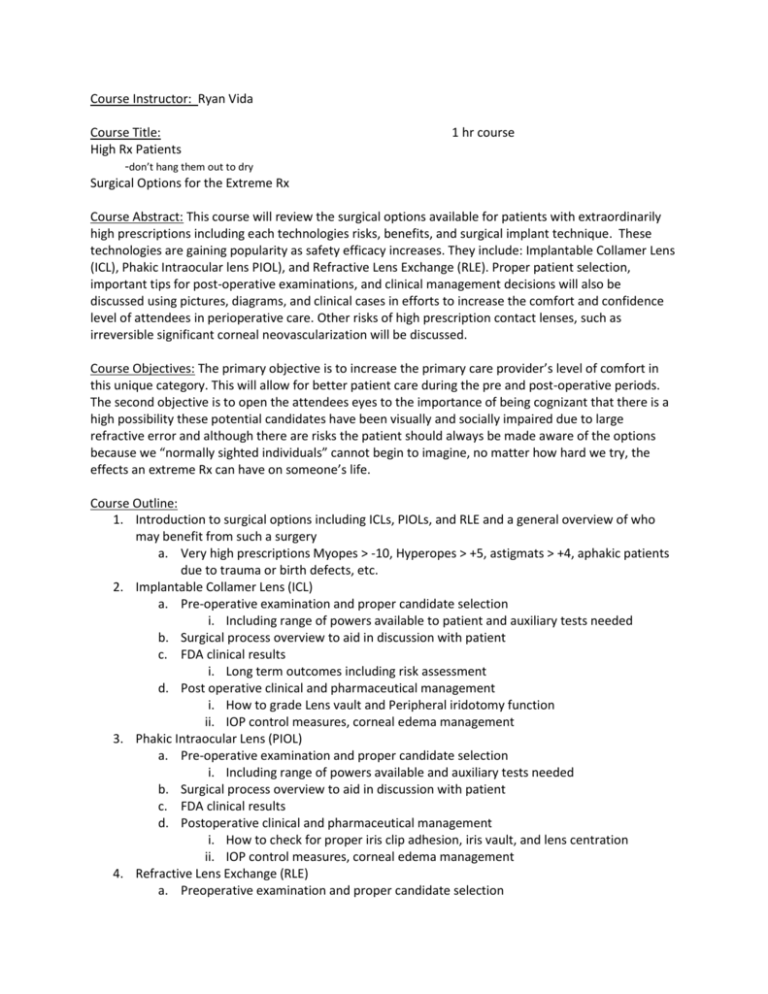
Course Instructor: Ryan Vida Course Title: High Rx Patients -don’t hang them out to dry Surgical Options for the Extreme Rx 1 hr course Course Abstract: This course will review the surgical options available for patients with extraordinarily high prescriptions including each technologies risks, benefits, and surgical implant technique. These technologies are gaining popularity as safety efficacy increases. They include: Implantable Collamer Lens (ICL), Phakic Intraocular lens PIOL), and Refractive Lens Exchange (RLE). Proper patient selection, important tips for post-operative examinations, and clinical management decisions will also be discussed using pictures, diagrams, and clinical cases in efforts to increase the comfort and confidence level of attendees in perioperative care. Other risks of high prescription contact lenses, such as irreversible significant corneal neovascularization will be discussed. Course Objectives: The primary objective is to increase the primary care provider’s level of comfort in this unique category. This will allow for better patient care during the pre and post-operative periods. The second objective is to open the attendees eyes to the importance of being cognizant that there is a high possibility these potential candidates have been visually and socially impaired due to large refractive error and although there are risks the patient should always be made aware of the options because we “normally sighted individuals” cannot begin to imagine, no matter how hard we try, the effects an extreme Rx can have on someone’s life. Course Outline: 1. Introduction to surgical options including ICLs, PIOLs, and RLE and a general overview of who may benefit from such a surgery a. Very high prescriptions Myopes > -10, Hyperopes > +5, astigmats > +4, aphakic patients due to trauma or birth defects, etc. 2. Implantable Collamer Lens (ICL) a. Pre-operative examination and proper candidate selection i. Including range of powers available to patient and auxiliary tests needed b. Surgical process overview to aid in discussion with patient c. FDA clinical results i. Long term outcomes including risk assessment d. Post operative clinical and pharmaceutical management i. How to grade Lens vault and Peripheral iridotomy function ii. IOP control measures, corneal edema management 3. Phakic Intraocular Lens (PIOL) a. Pre-operative examination and proper candidate selection i. Including range of powers available and auxiliary tests needed b. Surgical process overview to aid in discussion with patient c. FDA clinical results d. Postoperative clinical and pharmaceutical management i. How to check for proper iris clip adhesion, iris vault, and lens centration ii. IOP control measures, corneal edema management 4. Refractive Lens Exchange (RLE) a. Preoperative examination and proper candidate selection i. Including lens options available 1. Multifocal, Accommodating, Toric, Monofocal b. Surgical process overview to aid in discussion with patient c. Current reported complications and complication rates d. Postoperative clinical and pharmaceutical management i. Lens centration, capsular integrity, PCO formation, corneal edema, etc 5. Review of importance and need for psychological management for the aforementioned patients. Including hand holding, talking about total number of steps needed over several months to achieve final visual potential a. YAG Cap, refractive surgery, LRI during operation etc b. Discussion on the large financial and emotional investment for the patient.
